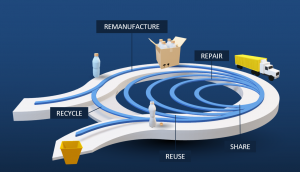The biggest consumer goods companies have emissions equal to small and medium-sized countries that are signatories of the Paris climate accord, and companies like Mars has a very important role to play in climate action.
Mars had set its first science-based targets initiative more than 13 years ago and recently set a new target to reduce total greenhouse gas emissions across our value chain by 27% by 2025 from 2015 levels and achieve Net Zero emissions by 2050.
It has been pulling all the obvious levers like renewable energy, stopping deforestation, changing recipes, and changing packaging. Carbon emission has also been incorporated into Mars’ governance and operations and will be linked to executive compensation at the same level as financial performance.
Mars’s executives are also part of various coalitions in the Consumer Goods Forum. Golden packaging rules for packaging were used to change the packaging of 9000 SKUs to make them suitable for waste infrastructure and also reduce carbon.
When we look at its emissions footprint in more detail you can see the majority of the emissions are from our agricultural supply chains. Mars is addressing land use and transforming how raw materials are sourced.
In this article, we will focus on how Mars is tackling Deforestation, and Scope 3 emissions from 20K suppliers and 1 Million farmers.
Simplifying Agriculture Supply Chain: It is one of the important drivers of deforestation and climate change. Mars has identified 5 key raw materials like beef, palm oil, pulp and paper, soy, and cocoa which possess the greatest risk of deforestation. Mars is trying to eliminate deforestation by “enhanced transparency and traceability”. It also means higher costs and “a continued shift away from purchasing ingredients based on cost alone.”
Palm Oil is usually a commodity bought from traders with opaque supply chains and no one knew where it came from and could not prove if it was deforestation-free. By radically simplifying the palm oil supply chain, partnering with a smaller cohort of suppliers and rigorously applying the three M’s of Mapping, Management and Monitoring its planning to eliminate deforestation and advance respect for human rights.
Mars spent three to four years shrinking its number of palm-oil suppliers from 1500 to 90 mills and is now on track to 10-20 mills to implement better management practices and monitoring. By shrinking the suppliers, they can put due diligence, install technologies like drones, satellites and also people on the ground to check there is no deforestation.
During the simplification and streamlining process, the suppliers sharing values are getting more business and less /no business from those who are not. Mars had to Rethink / Re-engineer the procurement models as with traceability, it’s no more a commodity.
Mars is now deforestation-free in Pulp, paper and palm, halfway through cocoa.
Supplier Collaboration
Mars found 95% of its carbon footprint was from its suppliers.
It’s challenging its 20,000 suppliers to take climate action. Mars procures around 20 billion dollars of goods and services from 20k suppliers. A Mars survey of the company’s top 200 suppliers found that only 10% set science-based targets a year ago. Most suppliers have now come on board to set a target. Mar’s footprint is their supplier’s footprint.
Mars, PepsiCo and McCormick & Co. are part of a new “coalition” called the Supplier Leadership on Climate Transition (Supplier LoCT) which helps their suppliers to set targets.
It acknowledges that the small and medium enterprises and an estimated 1 million farmers still remain a major challenge as these enterprises don’t have the required resources and know-how. It thinks there is a need to create a platform for these enterprises to provide the necessary support.
In order to extend this impact beyond Mar’s, they are asking suppliers to apply these principles to all the palm oil that they source not just the material they supply. If adopted by others, this can be a tipping point to drive systemic change across the entire palm supply chain.




Average Rating